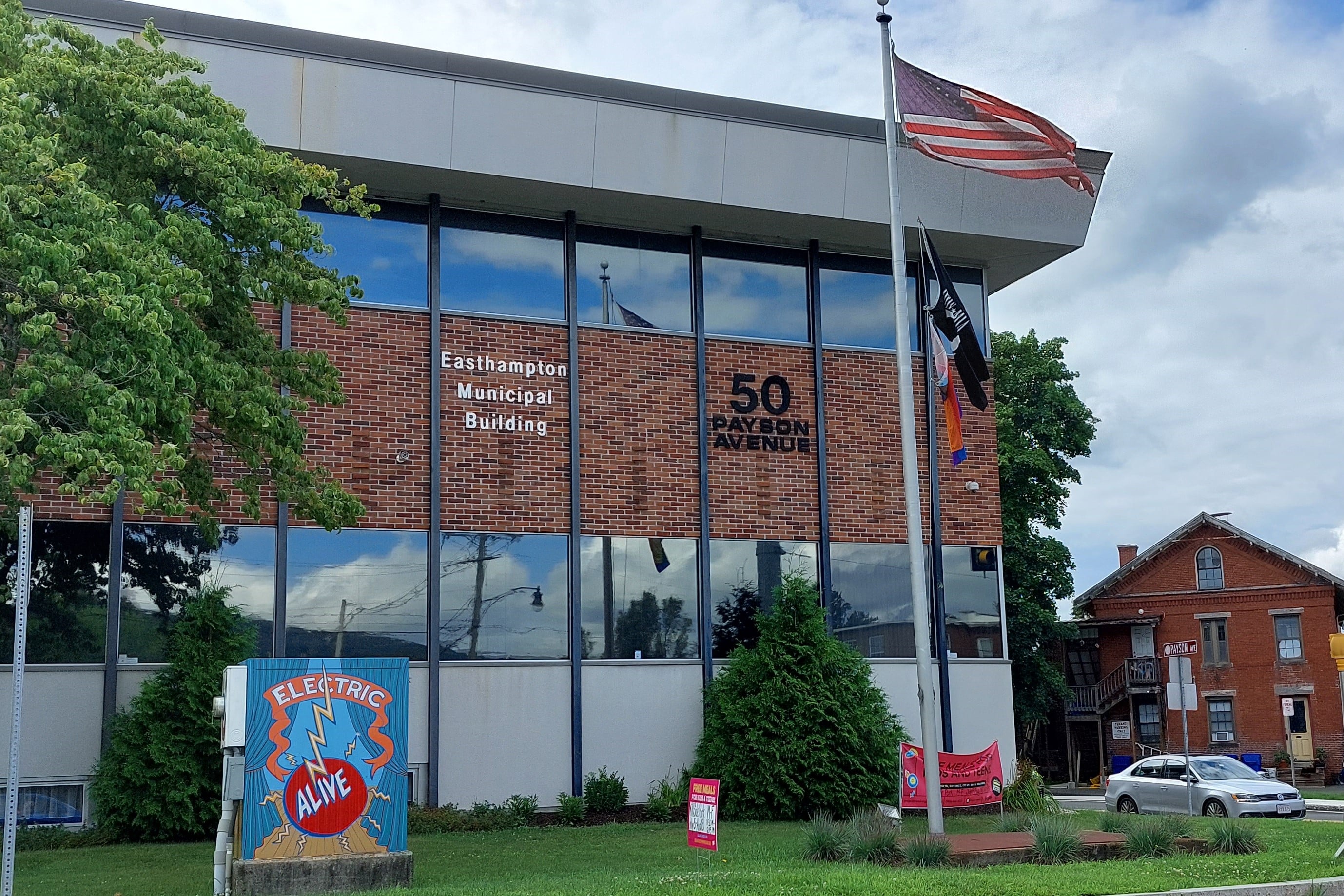EASTHAMPTON — During its Sept. 17 meeting, the Easthampton City Council voted to borrow $3 million toward the ongoing Ferry Street Development District following a public hearing.
The money borrowed will be used to demolish the existing structures at the site and fund the construction of infrastructure improvements, including public utility services, public parking, emergency vehicle access and a multi-use path to connect Ferry Street to the northern section of the Manhan Rail Trail.
This work will continue city efforts that began in 2018 when the council voted to create the “Ferry Street Development District” using an economic development tool called District Improvement Financing, or DIF, under state law. Interim Mayor Salem Derby explained this pilot agreement was designed to give stability and predictability to the developer at Ferry Street.
“What this does is it really creates a very stable timeline so the developer can use that to really plan this development forward, which allows for the project to stay on track, for it to happen, and to have that level of predictability that I think for a giant project like this needs to be in place,” said Derby.
Precinct 3 Councilor Thomas Peake explained DIFs help municipalities form a special account used to pay for the various infrastructure improvements that are going to be going hand in hand with the private development of the project.
“In this particular case, the motion that we have before us is about authorizing up to $3 million to be borrowed or bonded and what this would go towards is the demolition of one of the existing structures that’s on the parcel and then some of the construction infrastructure improvements, utilities and whatnot that would go around there,” Peake explained.
Peake added this wouldn’t be the last bit of work that would be going on as part of the project but it’s the only part the city currently anticipates borrowing or bonding any funds for.
“The idea is that then, as these buildings are built, we’ll collect this new revenue and then that revenue will then be used to make the bond payments. We might not need to appropriate this entire amount,” Peake said. “It’s not clear that we’re going to necessarily need the $3 million but that’s the cap of what the city is asking this council to authorize to borrow.”
Earlier this year while still in office, former Mayor Nicole LaChapelle submitted a request to the council to create an Invested Revenue District and Invested Revenue District Development Program, which are required in order for the city to invest in public improvements within the district.
Derby added the DIF district was developed in conjunction with a pilot program so developers getting involved were able to see what payments to the city would be over the course of the next 25 years.
“Part of that agreement was that those funds would go into infrastructure projects in this DIF area, and so what we’re looking at for this particular bonding is exploration and engineering of the demolition of the old generator building,” Derby explained. “That is a pretty critical piece of the ability to be able to start developing the other buildings because if this was still standing when the development of other buildings happened it could potentially fall and cause a lot of damage and potentially hurt people. This piece is one of the most important pieces just to get everything else going.”
Derby added while the ask was for an authorization of up to $3 million the city hopes all of it won’t necessarily be needed.
“The good news is the initial piece of this would be able $250,000 for the engineering and then that’ll give us a really clear idea of where we’re going to go from there for demolition. This will all be paid for by 6A payments from the developer, which is basically a pilot,” said Derby.
He added after 25 years the city should have much more than the $3 million plus interest.
“We’ll end up having more money from this account than we’re asking for right now and we did get word from our external auditor that basically if worst-case scenario happens — which, you know we try to look at the worst-case scenario — then we would have about seven years of deficit in this account,” Derby explained.
He continued, “And we were able to get confirmation from our external auditor that we would be able to use stabilization funds to offset that and then be able to return those stabilization funds after that time. That’s worst-case scenario. What we’re hoping is that the building will get a certificate of occupancy in 2029, which would prevent any deficit whatsoever, and we would actually have a significant surplus in this account moving forward.”
With the funding approved, it will now be part of the multi-year project at the Ferry Street Development District that has been a focus of the city for revitalization of the area. The project includes infrastructure improvements such as the construction of the rotary connecting Ferry, Lovefield and Pleasant streets, as well as water line upgrades.
The project will also create new residential and commercial space through private companies such as the One Ferry Project. Previous rounds of funding have been used to support the project through grants like Mass Works, Community Preservation Act funding and loans.
City Planner Allyson Manuel said there is recourse in the project contract if the developer defaults.
“There has already been development and improvements on the property that are valued at much more than what we’re talking about here so we would be able to recoup that cost,” said Manuel.
The public hearing portion of the meeting saw little input from the public, with one resident speaking in favor of the project while asking a clarification question.
Peake added before the vote that as someone who is interested in municipal government he has read about communities overusing a program such as this and thinks Easthampton is approaching the use of it with level heads.
“Once this property is redeveloped, the city will receive a substantial amount of revenue that it currently is not receiving because the property is valued at a number that’s not a very big one right now. When you’ve got all these housing units there and commercial units, it’s going to be worth a lot more and we’re going to make that money back,” said Peake. “I really am comfortable with the idea of doing a DIF in this particular case.”
A full recording of the council meeting and discussion can be found on the Easthampton Media YouTube channel.
“If you’ve been around Easthampton for a while, this whole area really needed improvement, there’s not doubt in anyone’s mind. This has been an ongoing project for years and years and years and I think members of the community share the pride in having this kind of structure and a pond that’s being revived,” said Precinct 1 Councilor JP Kwiecinski. “The city will receive the revenue back. It’s our opportunity to make these all happen and I’m glad to support the project.”



